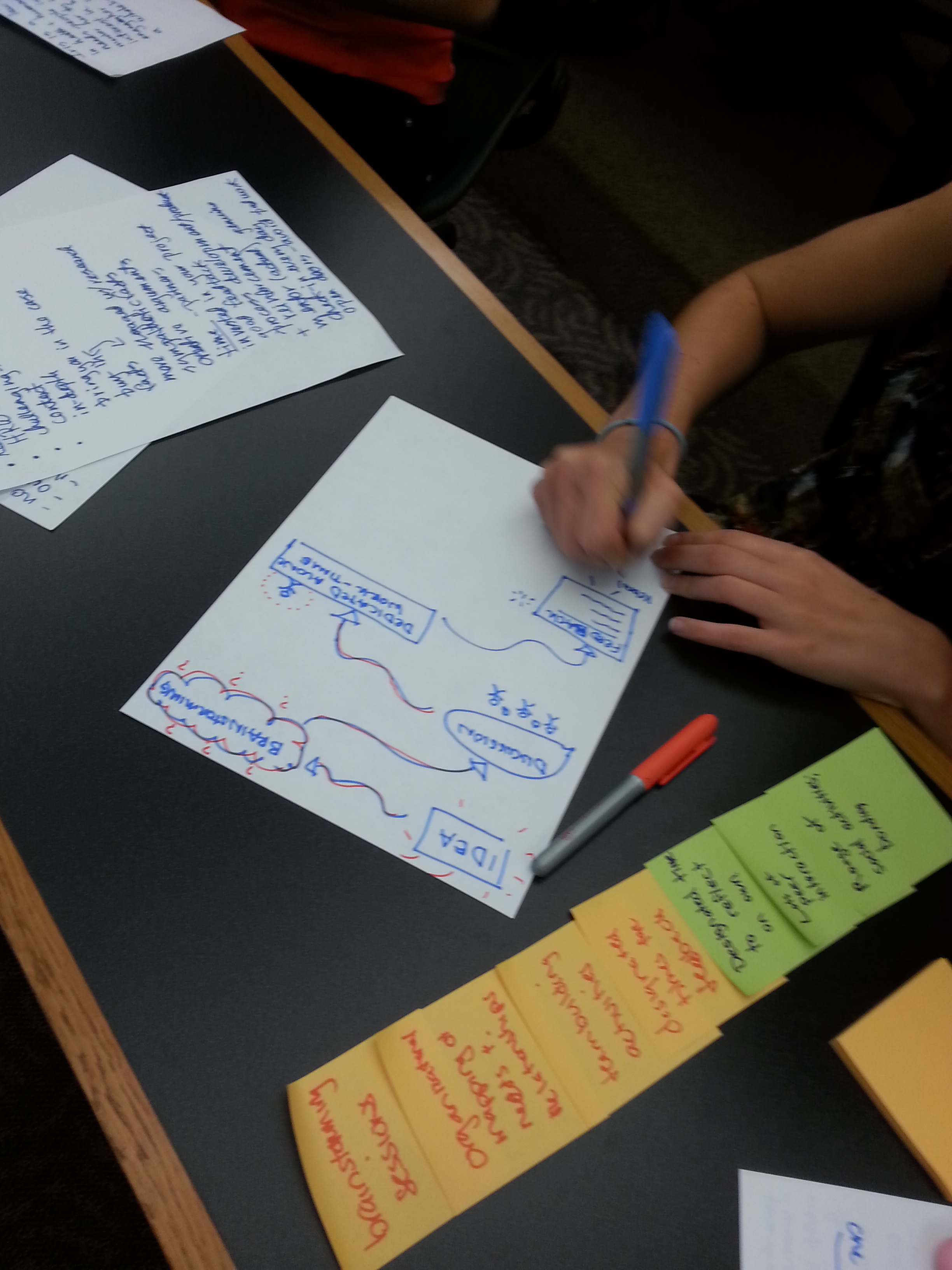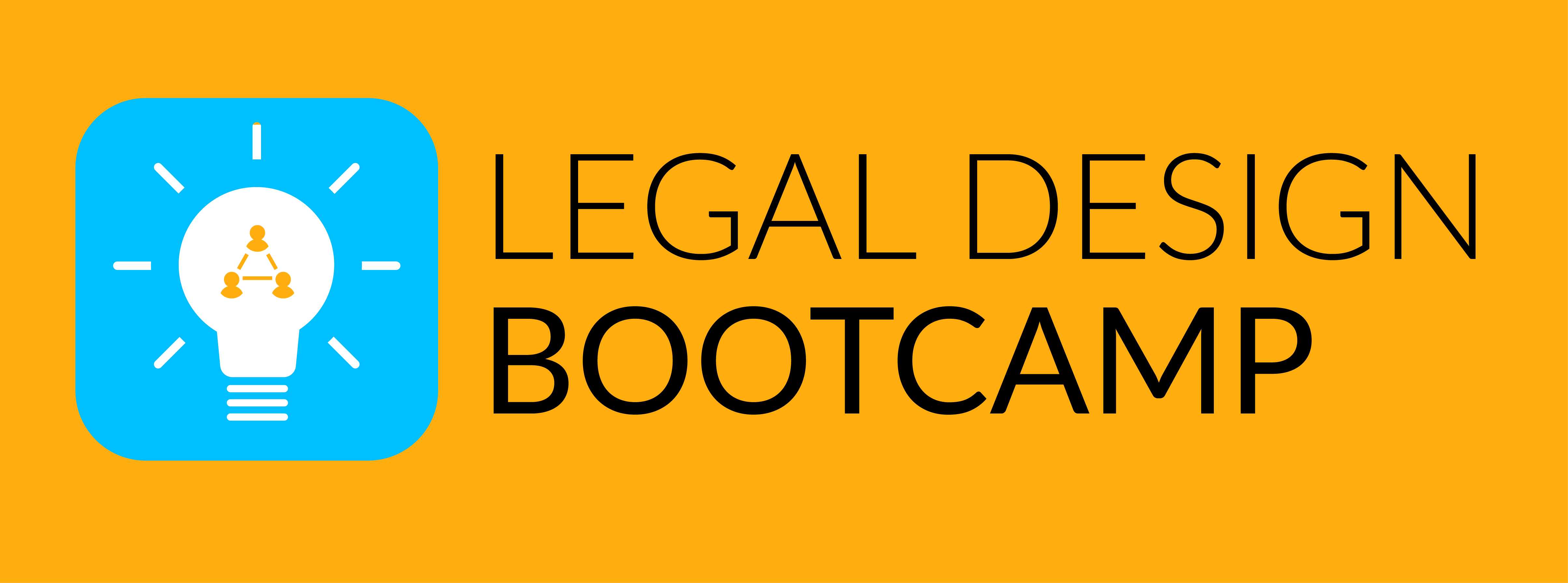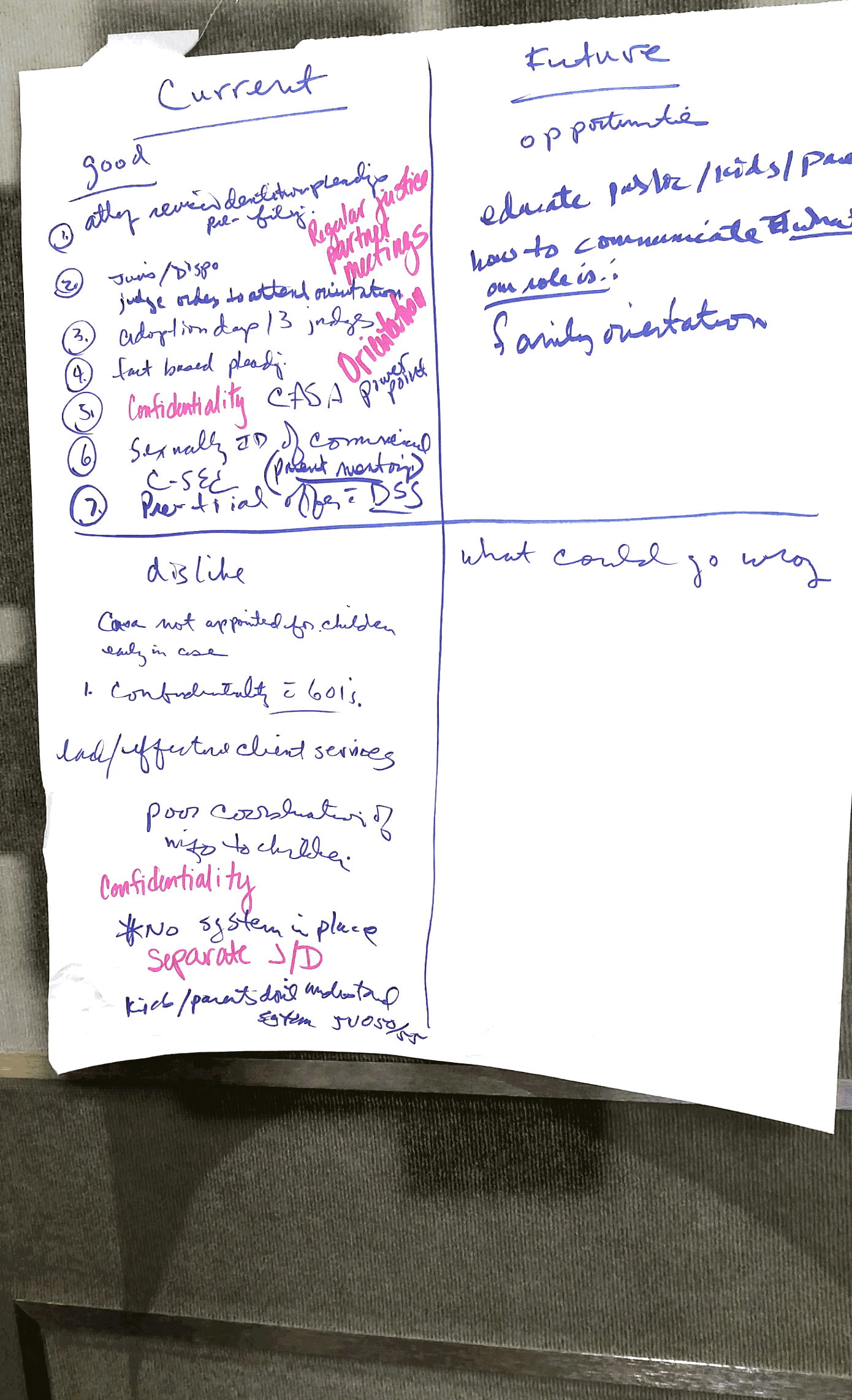Last Saturday, I ran a legal design workshop at Stanford Law School for the Shaking the Foundations Conference. The participants were a mix of public service oriented law students from the US, the UK, the Netherlands, and Spain. It was a two hour workshop, focused on the basics of the design process, how it can be applied to legal services and legal organizations, and a hands on design sprint to get practice in applying design to law.
For the design sprint, we worked on the challenge of training young lawyers. Each of the participants interviewed another about their legal jobs, and frustrations and opportunities with how they were trained there.
The participants then brainstormed and prototyped new tools and services to bridge the new lawyer-experienced lawyer gap and increase opportunities for mentorship and learning on the job.
Here are some of the images of the participants sketching out their designs.
What insights emerged from the design sprint?
- There is a generation gap in legal organizations, defined by differing expectations of what work culture should be like, and how feedback and mentorship should be provided
- Many of the participants wanted more social, conversational modes of feedback, that would allow for a more collaborative work culture and would help the young lawyer brainstorm new ways to be more effective, as well as creating a tone that is more supportive and less hierarchical
- A common complaint was that young lawyers skills are not well matched to the tasks that legal organization assign them. Many people reported feeling underused, and underappreciated. They wanted more challenges and more opportunities to apply their critical thinking and creativity.
- One participant in particular so that “I have ideas, but I don’t know what to do with them”. They did not feel like there were organization gave them an outlet to be innovative or thoughtful.
Here are some of my jotted down notes based on the design sprint’ s conversations.
s conversations.
What ideas emerged from the design sprint? Here is a short list of them:
1) A role-playing client-attorney game. The digital platform will have lots of fake profiles that young lawyers will create and maintain. Other lawyers will practice intake and other lawyering skills with these fake profiles. The people on the platform will have the chance to play at being both roles — and develop understanding of each other.
2) A mentorship app platform. Young novice lawyers can submit their questions and work products online, and request a more experienced lawyer to give feedback and guidance in response. It can be a coaching platform too.
3) A practical knowledge repository. A law firm documents all its rules, practices, protocols onto a single online platform. That way any lawyer or staff can find out how tasks should be done according to the law firm’s way.
4) A feedback workflow, that would have supervisors conversing, brainstorming, designing feedback custom for the young lawyer.
5) A legal meet up group,
6) A bank of experts from another discipline, who also have an interest in law, that could be tapped into for legal challenges or needs for expertise, testimony, resources, etc
7) An online platform to get trained in certain practice areas — to develop up critical thinking skills — to hone and practice legal skills — to up your skills






